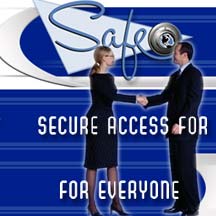Body
 In hopes of cutting administrative costs and streamlining the amount of time it takes to get new drugs to consumers, eight global pharmaceutical manufacturers have formed a coalition, SAFE-BioPharma, to support the widespread adoption of the new global digital identity standard, Secure Access for Everyone (SAFE).As the biopharmaceutical industry has become more automated, it’s also become more collaborative. Inter-agency relations are more important than ever, but automation makes maintaining such relationships a challenge. This situation creates the need for a standardized communications approach to e-signatures that is both secure and legally enforceable.
In hopes of cutting administrative costs and streamlining the amount of time it takes to get new drugs to consumers, eight global pharmaceutical manufacturers have formed a coalition, SAFE-BioPharma, to support the widespread adoption of the new global digital identity standard, Secure Access for Everyone (SAFE).As the biopharmaceutical industry has become more automated, it’s also become more collaborative. Inter-agency relations are more important than ever, but automation makes maintaining such relationships a challenge. This situation creates the need for a standardized communications approach to e-signatures that is both secure and legally enforceable. SAFE was introduced in June 2004 and includes policies, procedures, guidelines, technical specifications and a liability risk management framework for ensuring the validity and identity of authorized users. The network on which it operates was designed to assure member companies complete security while reducing the risks and costs associated with creating internal, legally enforceable digital signatures.
…
Want to continue?
Log in or create a FREE account.
By logging in you agree to receive communication from Quality Digest.
Privacy Policy.
Add new comment